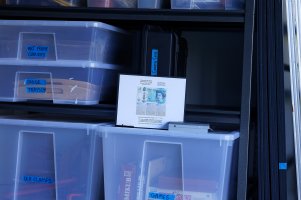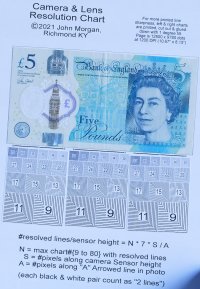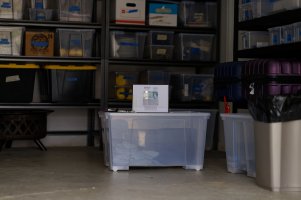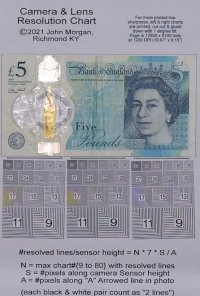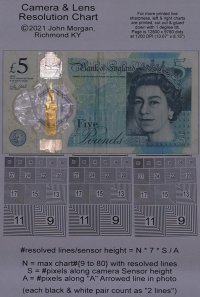OK, now I'll do the same images, only with the lens test chart rotated 90 degrees to see what we get.
Here is the 45M entire (uncropped) portrait mode image, reduced to 2K to upload:
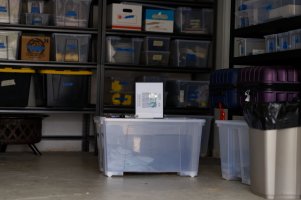
Here is the 1:1 crop from the above 45M vertical chart:
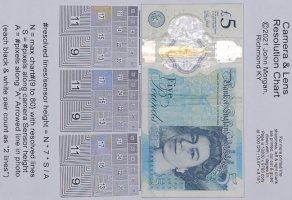
Here is the 1:1 crop from the 400M vertical chart:
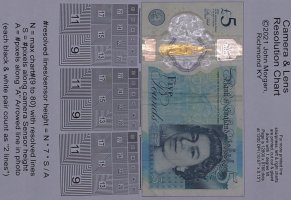
For the vertical 45M image, I see the vertical and horizontal resolution to be 11,
just like on the non-rotated image previously posted.
I read the value of A to be 123, which is within a percent of the 124 read in the normal mode,
so that means my chart aspect ratio is indeed 1:1.
For the vertical 400M image, I see the vertical resolution at 27, and horizontal resolution at 20.
Verrrrry interesting. It seems to me that the vertical resolution of the sensor is significantly higher than the horizontal resolution.
The first (non-rotated chart) showed vertical vs.horizontal resolution # of 24 vs 20, while the rotated chart images
show it as 27 vs 20.
A was 370, and the sensor image height is 16384.
vertical resolution: 27 * 7 * 16384 / 370 = 8400
horizontal resolution: 20 * 7 * 16384 / 370 = 6200
Obviously it's hard to get a perfect guess as the right #'s for me.
Based on this, I don't think the vertical vs horizontal difference is because of the sharpness and contrast of my lines.
But it may be that my chart printout is off a bit (in the printer itself).
I see the A value as 370, close to the 372 in the normal mode, so I'm leaning more to thinking my testChart is not the problem.
So, I've now got 3 different measures of the 45M resolution, at 2 different distances & 1 vertical rotation:
3600, 3400, 3400. So I'll guess that
3500 is a good estimate for 45M resolution for this test.
I've also got 3 measures of the 400M resolutions.
Vertical resolution: 7900, 7400, 7400, so I guess
7600 is a good estimate for this test.
Horizontal resolution: 6600, 6200, 6200, so I guess
6400 is a good estimate for this test.
I, for one, would be interested to see if anyone else can measure the vertical & horizontal 45M & 400M resolutions
and see if they get the same values or a noticeable increase the vertical one over the horizontal one.
The bottom line is that it shows a massive jump in line resolution over the 45M file,
and for that l give Cannon a big shout out, ... HUZZAH!

